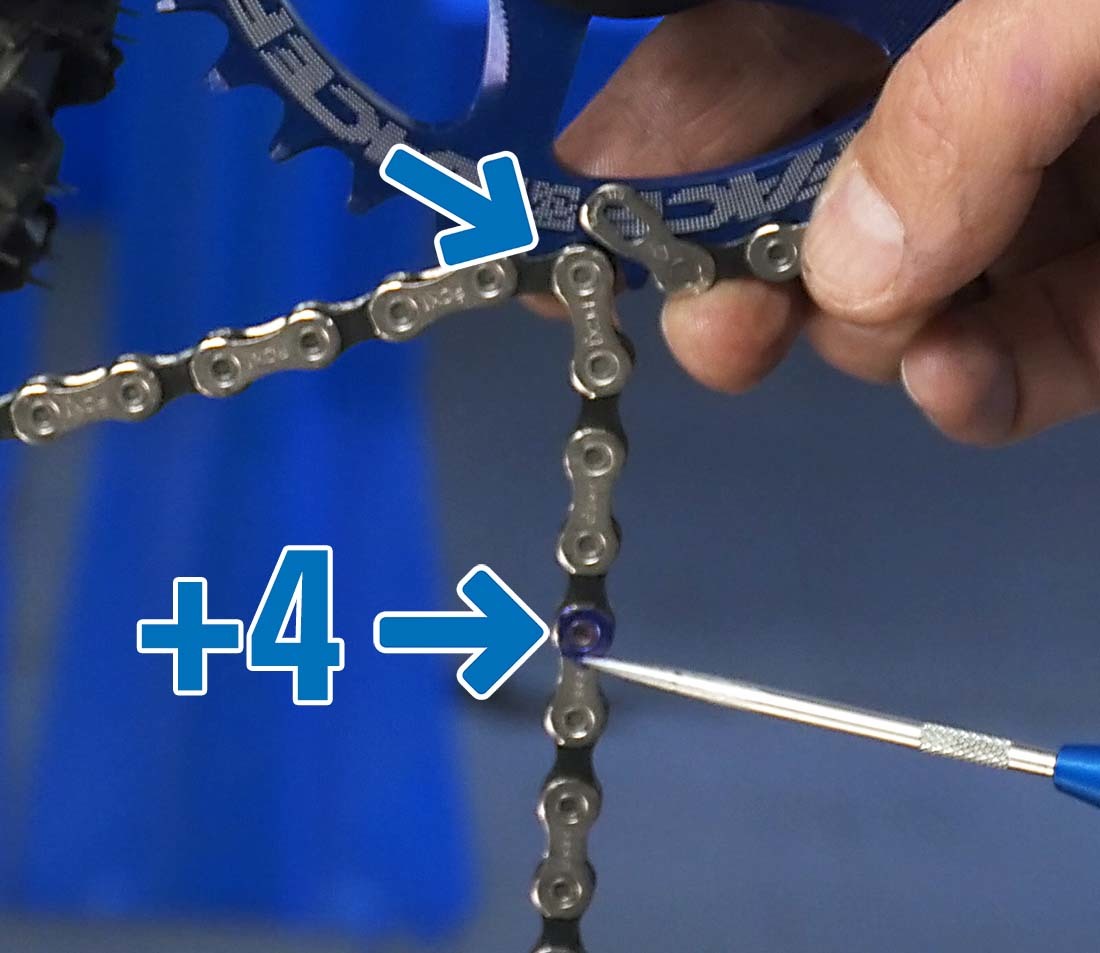Why Chain Sizing Matters for a Smooth Pedaling Experience
When it comes to optimizing your ride, sizing a bicycle chain is a crucial aspect that is often overlooked. A chain that is too long or too short can lead to a range of issues, including poor shifting, increased wear on components, and even safety hazards. In fact, a study by the Bicycle Product Suppliers Association found that improper chain sizing is a leading cause of mechanical failures in bicycles. By understanding the importance of proper chain sizing, cyclists can take the first step towards ensuring a smooth, efficient, and safe ride. Whether you’re a casual rider or a competitive cyclist, sizing a bicycle chain correctly can make all the difference in your overall riding experience.
Understanding Chain Measurements: A Guide to Chain Length and Pitch
When it comes to sizing a bicycle chain, understanding the different measurements used to describe chains is crucial. There are three key measurements to consider: chain length, pitch, and width. Chain length refers to the overall length of the chain, typically measured in inches or millimeters. Pitch, on the other hand, refers to the distance between each link, usually measured in inches or millimeters as well. Width, as the name suggests, refers to the thickness of the chain. To determine the correct size for your bike, you’ll need to consider these measurements in conjunction with your bike’s specific requirements, such as the type of gearing and the size of the sprockets. By understanding these measurements and how they interact, you can ensure that your chain is properly sized for optimal performance and longevity.
How to Measure Your Chain: A Step-by-Step Guide
Measuring a bicycle chain is a crucial step in sizing a bicycle chain correctly. To ensure accurate measurements, it’s essential to follow a step-by-step guide. First, gather the necessary tools, including a chain checker tool and a ruler or tape measure. Next, locate the master link, which is the part of the chain that can be opened and closed. Measure the length of the chain by counting the number of links and multiplying it by the pitch, which is the distance between each link. For example, if the chain has 100 links and a pitch of 0.5 inches, the total length would be 50 inches. Additionally, measure the width of the chain to ensure it matches the specifications of your bike’s gears and sprockets. By following these steps, you can accurately measure your chain and determine the correct size for optimal performance.
Factors Affecting Chain Sizing: Bike Type, Gearing, and Rider Style
When it comes to sizing a bicycle chain, several factors come into play. One of the most significant factors is the type of bike. Road bikes, mountain bikes, and hybrid bikes all have different chain sizing requirements. For example, road bikes typically require a shorter chain length due to their smaller gears and tighter tolerances, while mountain bikes require a longer chain length to accommodate their larger gears and increased suspension travel. Gearing is another critical factor, as single-speed bikes require a different chain length than derailleur-equipped bikes. Additionally, rider style plays a significant role, as aggressive riders may require a longer chain length to accommodate their more dynamic riding style, while casual riders may be able to get away with a shorter chain length. By considering these factors, riders can ensure that their chain is properly sized for optimal performance and longevity. Proper chain sizing is crucial, as an incorrectly sized chain can lead to poor shifting, increased wear on components, and even safety issues. By taking the time to consider these factors, riders can ensure a smooth, efficient, and enjoyable ride.
Common Chain Sizing Mistakes and How to Avoid Them
When it comes to sizing a bicycle chain, there are several common mistakes that can lead to poor performance, reduced efficiency, and even safety issues. One of the most common mistakes is using the wrong measurement method. Many riders rely on the manufacturer’s recommended chain length, without considering the specific needs of their bike. This can result in a chain that is too long or too short, leading to poor shifting and increased wear on components. Another common mistake is neglecting to consider the bike’s gearing. For example, a derailleur-equipped bike requires a different chain length than a single-speed bike. Additionally, riders may fail to account for their own riding style, which can affect the chain’s performance. To avoid these mistakes, riders should take the time to measure their chain accurately, consider the bike’s gearing and their own riding style, and consult with a professional if necessary. By doing so, riders can ensure that their chain is properly sized for optimal performance and longevity. Proper sizing a bicycle chain is crucial, as it can make all the difference in a smooth, efficient, and enjoyable ride.
Chain Sizing for Different Types of Bicycles: A Comparison
When it comes to sizing a bicycle chain, different types of bicycles have unique requirements. Road bikes, for example, typically require a shorter chain length due to their smaller gears and tighter tolerances. This allows for faster shifting and a more responsive ride. Mountain bikes, on the other hand, require a longer chain length to accommodate their larger gears and increased suspension travel. Hybrid bikes, which combine elements of road and mountain bikes, fall somewhere in between. Additionally, the type of gearing used on the bike also plays a significant role in chain sizing. Single-speed bikes, for instance, require a different chain length than derailleur-equipped bikes. By understanding the specific chain sizing requirements for different types of bicycles, riders can ensure that their chain is properly sized for optimal performance and longevity. Whether you’re riding a road bike, mountain bike, or hybrid bike, proper chain sizing is crucial for a smooth, efficient, and enjoyable ride. By taking the time to consider the unique requirements of your bike, you can avoid common mistakes and ensure that your chain is properly sized for optimal performance.
Chain Maintenance and Replacement: When to Replace Your Chain
Regular chain maintenance and replacement are crucial for optimal chain performance and longevity. A well-maintained chain can ensure a smooth, efficient, and enjoyable ride, while a neglected chain can lead to poor shifting, increased wear on components, and even safety issues. So, how do you know when it’s time to replace your chain? One of the most common signs is stretch, which can be measured using a chain checker tool. If the chain has stretched beyond the recommended limit, it’s time to replace it. Other signs that indicate a chain needs to be replaced include rust, wear, and corrosion. Additionally, if you’ve been riding in harsh conditions, such as wet or dirty roads, you may need to replace your chain more frequently. By staying on top of chain maintenance and replacement, you can ensure that your chain is properly sized and functioning at its best. Remember, sizing a bicycle chain is not a one-time task, it’s an ongoing process that requires regular attention to ensure optimal performance and longevity. By following the guidelines outlined in this article, you can keep your chain in top condition and enjoy a safe and enjoyable ride.
Conclusion: The Importance of Proper Chain Sizing for a Safe and Enjoyable Ride
In conclusion, sizing a bicycle chain is a crucial aspect of maintaining a smooth, efficient, and enjoyable ride. By understanding the importance of proper chain sizing, riders can avoid common mistakes and ensure optimal chain performance. Whether you’re a casual rider or an aggressive cyclist, proper chain sizing is essential for a safe and enjoyable ride. Remember, sizing a bicycle chain is not a one-time task, it’s an ongoing process that requires regular attention to ensure optimal performance and longevity. By following the guidelines outlined in this article, riders can ensure that their chain is properly sized and functioning at its best. Don’t let a poorly sized chain hold you back from enjoying your ride. Take the time to learn about chain sizing and maintenance, and experience the difference it can make. With proper chain sizing, you can ride with confidence, knowing that your chain is working efficiently and effectively. So, take the first step towards optimizing your ride and learn how to properly size your bicycle chain today.








